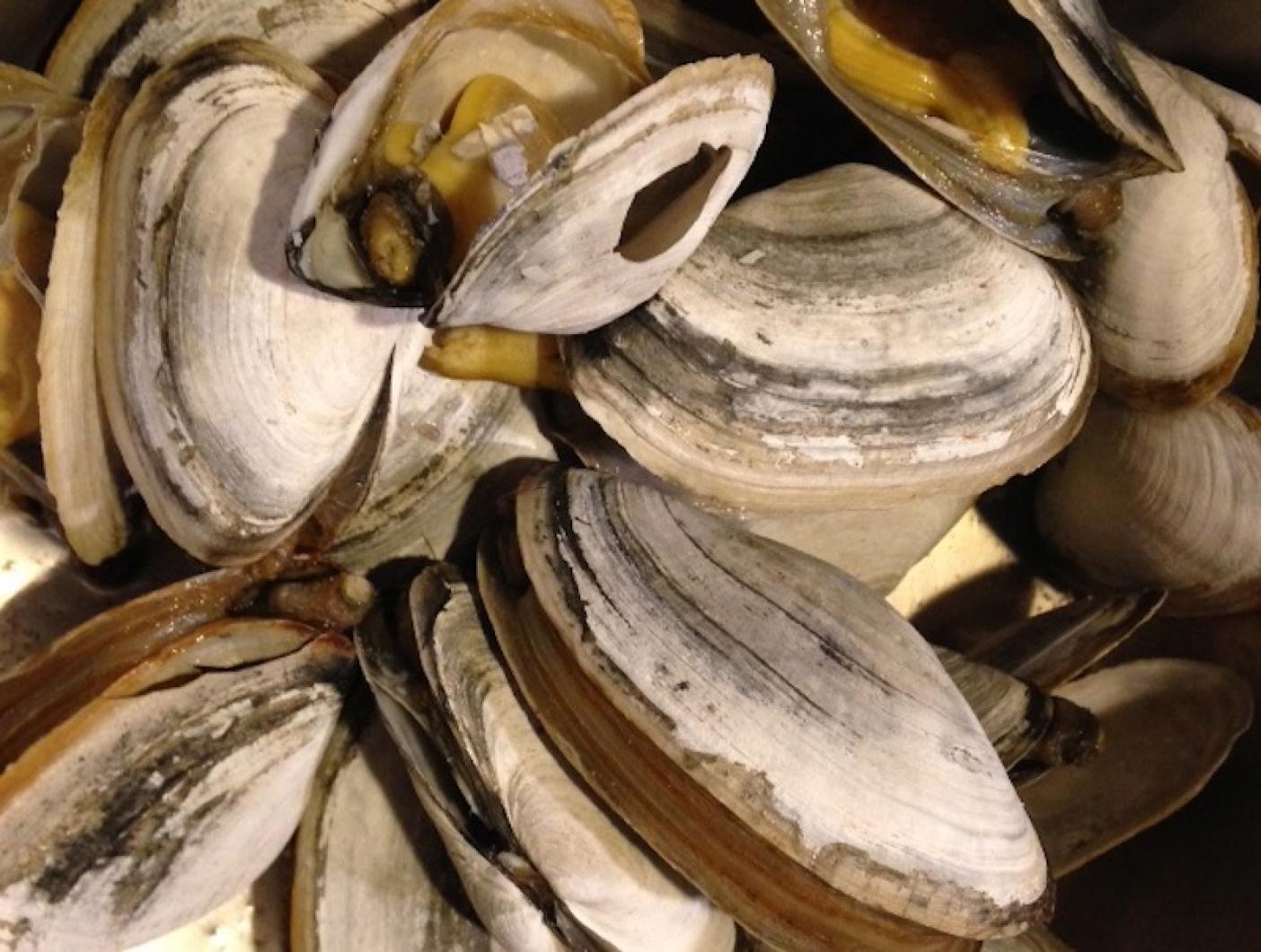The object of my affection today is the softshell clam, Mya arenaria. With the onset of warmer weather, shellfishing is back on many agendas. There is no getting enough of this marine morsel. American author Louis Kronenberger explained well how one might feel after a bountiful clam dinner when he said, “She ate so many clams that her stomach rose and fell with the tide.”
And why not consume these local clams until your belly bursts with bliss? English 18th-century explorer, naturalist and writer John Lawson strangely called them “man of noses.” He didn’t explain the reason for the unusual name, but did go on to give his opinion of Southern men and women by saying that these clams, “are valued for increasing Vigour in Men, and making barren Women fruitful; but I think they have no need of that (shell) Fish; for the Women in Carolina are fruitful enough without their Helps.”
The healthful “helps” that softshells provide are comprehensive. These clams are low in fat and calories and are a great source of selenium, zinc, iron and vitamin B-12. And this is before you add a little (or a lot of) butter. While these clams are delicious unadorned, butter makes everything better.
Naked or doused, humans are not their only predators. Consider the competition: crabs, snails, sea star, fish, gulls and waterfowl will all partake of them.
Finding these clams in our local waters can be a bit of a trick, since they bury themselves in the sand or mud in shallow estuarine (semi-salty) water six to 10 inches below the surface. But they do leave a telltale sign of their existence. Look for holes from their siphons or the squirt of one of these so-called piss clams, which spurt water when they are disturbed.
If you unearth one, be sure to take it home (provided you have a permit). If you leave it on the beach, it cannot dig itself back into the muck and will be certain dinner for some creature other than yourself. Dig gently, as those shells crush easily.
Piss clam is not this clam’s only interesting alias. Others describe various facets of these seaside edibles — Nannynoses, steamers, longnecks, softshells, Essex clams, Ipswich clams and sand gapers. The obvious ones are the location names, Essex and Ipswich; while the others describe their habits, physiology or culinary aspects. Its scientific name is also telling. Mya means “sea mussel” and arena is sand.
With their two siphons (one for incoming food and the other for outgoing waste) and muscular foot, it is no surprise that this clam cannot close completely, leading to the name sand gaper. The nickname steamers lets you know the easiest way to cook them, and long necks again describe those siphons. Your guess is as good as mine on nannynoses and/or man of noses.
We can wax philosophical about the meanings of these names, or about the raptures of enjoying this delicacy, but give the last word to a true philosopher, Jean-Paul Sartre, who gave us something else to chew over when he wrote: “It is not a matter of indifference whether we like oysters or clams, snails or shrimp, if only we know how to unravel the existential significance of these foods.”
Suzan Bellincampi is director of the Fe lix Neck Wildlife Sanctuary in Edgartown, and author of Martha’s Vineyard: A Field Guide to Island Nature.






Comments
Comment policy »